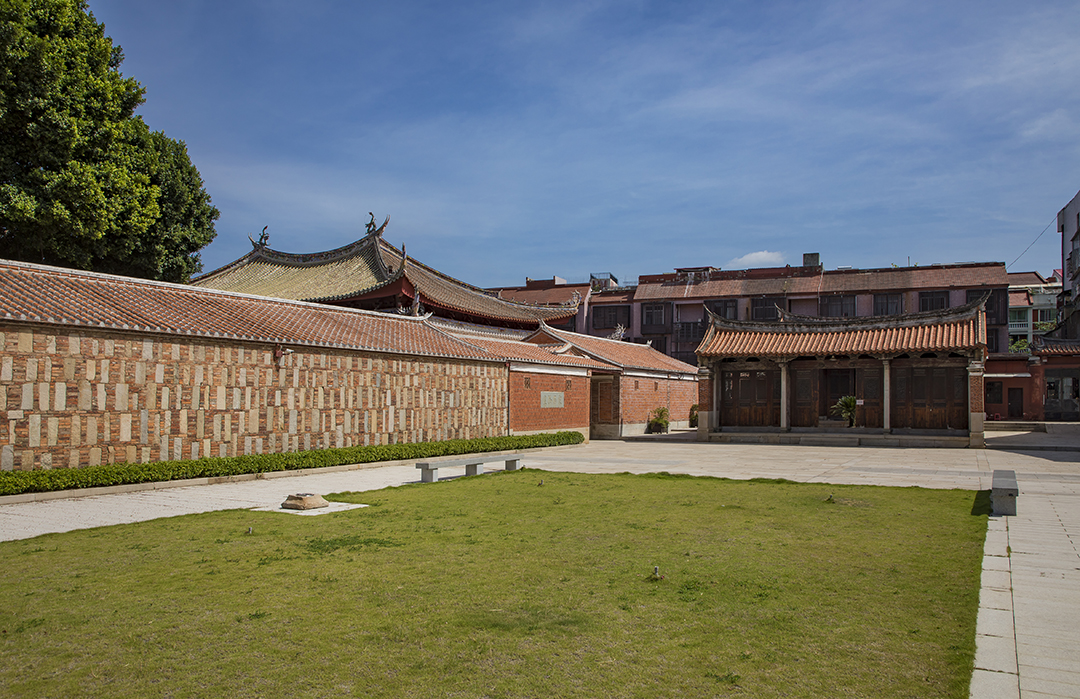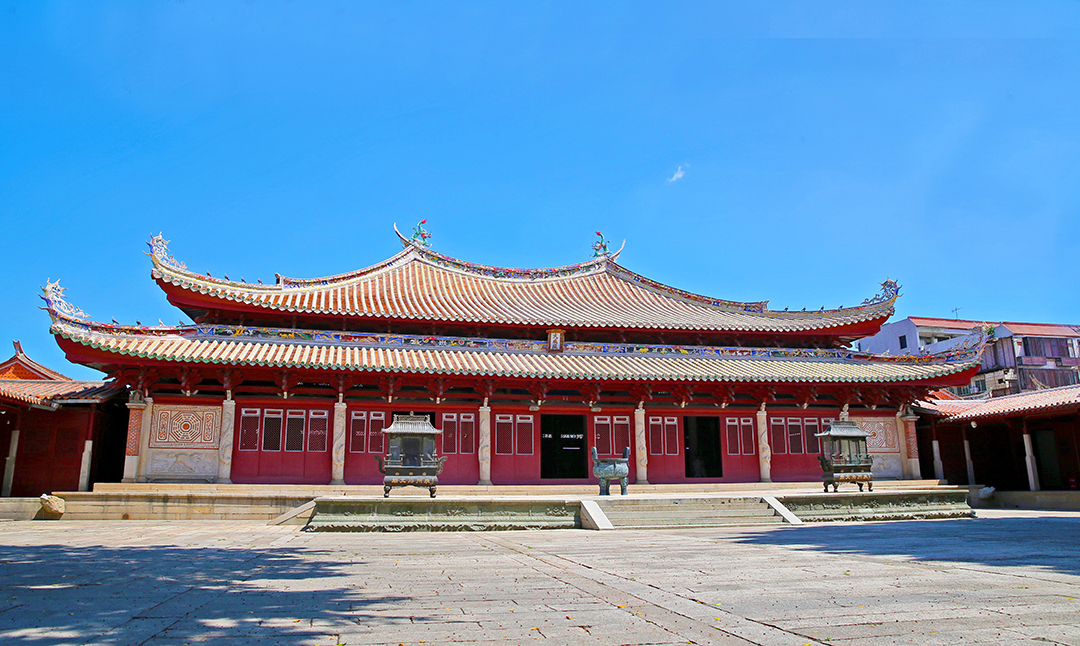
The Confucius Temple is a representative component reflecting the Multi-cultural Communities of the city as an emporium of world maritime trade. It is a place for Confucians to offer sacrifice and the city’s highest institute of education. The social elites it cultivated played an important role in the development and management of Song-Yuan-era maritime trade. The Confucius Temple and School is located in what was once the northeast of Quanzhou city in the 10th century. Construction began on the building complex in 976; however, the main structure did not take shape until 1137. The building complex faces southward, with the school on the left (east) and the temple on the right (west). The religious buildings on the west side were dedicated to Confucian sacrifice and the buildings on the east side served the function of a prefecture-level institute of local education. Proceeding from south to north along the axis of the west group of buildings which constitutes the Confucian temple, we can find the remnants of Lingxing Gate, followed by the open courtyard, Dacheng Gate, the pond and bridge, the worship courtyard, and finally Dacheng Palace Hall. Proceeding from south to north along the axis of the east group of buildings which constitutes the school, there is Yuying Gate, followed by the study pond and bridge, the open courtyard, and finally Minglun Hall. In front of the hall are the east and west study rooms. Besides, there are three memorial halls dedicated to the commemoration of Quanzhou’s famous historical figures, namely, Cai Wenzhuang Shrine, Li Wenjie Shrine, and Zhuang Jicang Shrine. Dacheng Hall is the heart of the building complex, its face spanning seven bays, topped by a double-eave hip-and-gable roof clad with yellowish glazed tiles. The roof is supported by pillars gilded with dragon designs, and the interior of the hall is painted with bright colors. All these elements together display an uncommon level of architectural standards.


 闽公安备35050302000734
闽公安备35050302000734
